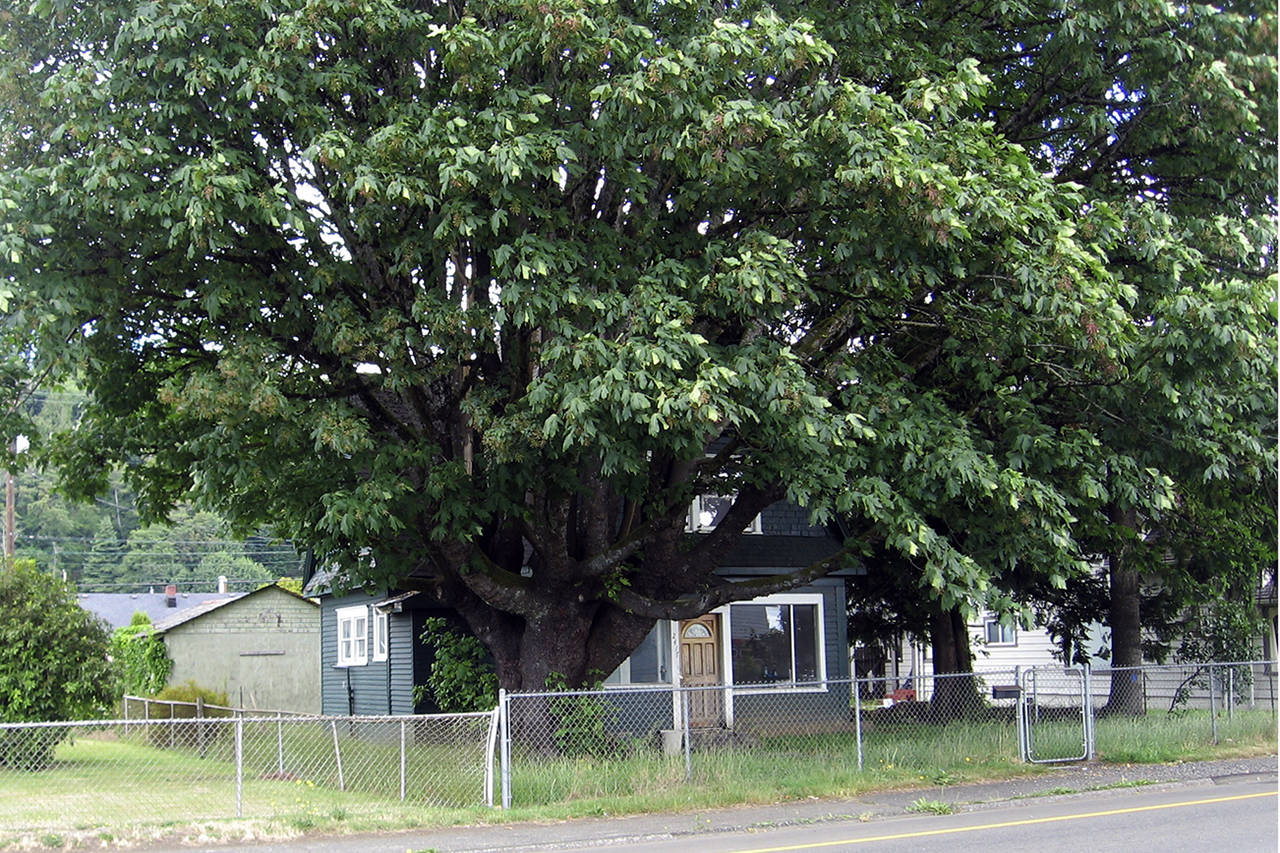If you follow the Master Gardener articles in this space, you are already familiar with our mantra, “the right plant in the right space.” This is always excellent advice. When designing or adding to your permanent plants, keep this in mind.
Shrubs and trees can be costly and, depending on their size when you buy them, awkward and heavy to move. To avoid mistakes, planning ahead is the key to success.
It is tempting to walk into a nursery and buy a gorgeous plant at first sight. But save yourself some grief and know your criteria before you buy.
If you see a plant you really like, check the correct Latin name, then find out its requirements: size at maturity; water and nutritional needs; soil preference; and most important, perhaps, in which hardiness zones it will grow best.
If you do not have a hardiness zone chart at home (it’s in most garden catalogs and books), look online or ask a salesperson at your nursery. The zone number (in Grays Harbor County, it will be either 8 or 9 for most of us) refers to the average annual minimum temperature in which the plant will thrive.
Not always shown, however, is the heat index: how many days reach optimal temperatures. On the actual coast, where I live, the heat index is lower than, say, in Elma, where it gets much warmer in the summer — and for more days.
If the plant you fall in love with is not right for your area and situation, don’t despair; ask about other, similar plants. And please consider adding native plants to your landscape. After all, if they evolved here, the growing conditions are certainly right! Salespeople in a nursery should be knowledgeable about what grows well locally. Plus, there are many excellent landscaping and garden books that have listings of multiple plants that work well in a given situation.
Be practical. A jacaranda tree in a subtropical zone is beautiful, but would struggle in our climate. A date palm is great if you live in Palm Springs or Phoenix, but probably will not thrive here.
Another plant characteristic to consider before buying a shrub or tree is its mature size. Start by looking around your yard, and then look up: Do you have power or other electric lines crossing the area where you wish to plant a tree? You probably shouldn’t plant what will become a 75-foot tree in a small urban garden; choose the appropriate size for the scale of your property. Save those large, spreading trees for large lots that are an acre or more in size. Both you and the tree will be happier!
If you want to plant something close to your house, choose a plant that does not have a trunk that will keep growing wider. Too many people plant “easy” evergreens to cover the foundation area of their house. But, after a few years, most of them will develop a fairly sturdy trunk and root system that can grow under the foundation, damaging it (very costly to repair) and the siding of the house. Plus, when it gets tall enough, it must grow outward to avoid the eaves of the house and get sun — very unattractive.
So, consider not only the mature height of the shrub or tree, but also the thickness of the trunk and the size and extent of the root system. A plants person at a nursery, a good gardening book, or online source can help you make the smart choices here.
An aesthetic consideration when choosing a plant is to consider what you want it to do. If you want it to be a showpiece for the yard, plant it where it can be seen from inside the house as well as outside. But, if you wish to block a view to a too-close neighboring property or serve as a wind block, plant it near the lot line. Choose quick-growing tall shrubs or trees, plant several so they form a line, and place them on the windward side of your property.
With careful planning and choice of plants, you will have a lovely yard that you will be proud of.
Ann Morris, an emeritus WSU Master Gardener, lives in Grays Harbor City.


